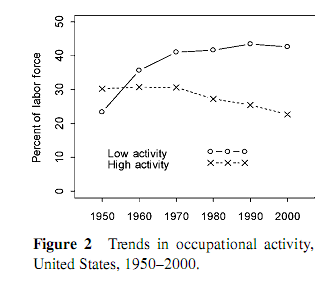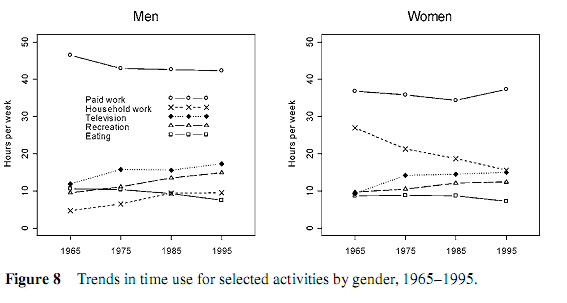A brief history of weight and activity
Most people think the obesity problem began around the 70s, because that’s when it started to become noticed in the news and the literature. But it seems to have been in the works for a long time. Data from the past hundred years [1] shows a steady increase throughout the 20th century, although it does seem to have ramped up towards the end. The continual debate is whether weight gain has been caused by eating more or exercising less; sometimes called food vs feet.
Feet
Sadly I’ve only been able to find data going back to around the 1950s. We exercise less at work[]:
We watch more TV; the average household watched 4.5 hours of TV in 1950 but close to 7 in 2000 (ibid) (this is not per person, it’s per household, so 2 people watching 3.5 hours per day would be 7).
I had thought that people had less leisure time now than they used to, but that doesn’t seem to be the case. Interestingly, we spend less time eating:
The report from that these figures are from has a lot of interesting material (unfortunately it’s behind a paywall). More people live in suburbs, and we drive close to 30 miles per day (compared to 5 in 1950).
Food
Surprise! We eat a lot more today than we used to. I’m not quite sure why that is; for now let’s just look at some numbers.
We produce more food; about 900 kcal more in 2007 than in 1961[3]
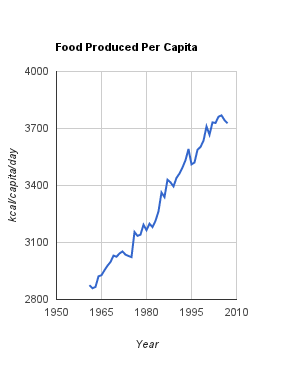
Annual food produced per capita
The amount the average american spends on food has gone down, from about 15% of disposable personal income in 1965 to 10% in 2010 []:
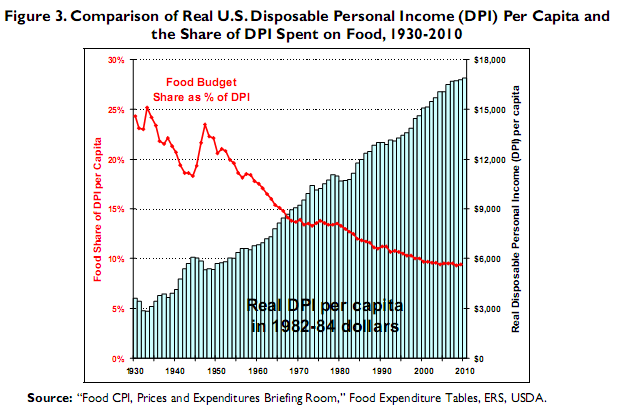
What I find quite interesting is that we eat out more []:
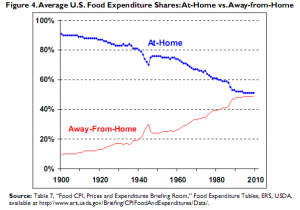
The average adult eats 500 kcal/day more today, which would cause an increase in 10.6 kg if activity were held constant []. Oddly enough, the actual gain was only 8.6 kg. The authors postulate an increase in physical activity, although from the data above I doubt that. My opinion? Their model is just a bit off.
Conclusion
We exercise less, and we eat more. The drop in exercise comes from economic shifts, not a lot which can be done about that without reforming the global economy. Furthermore, it doesn’t seem to matter all that much. “Fork” is the main culprit for weight gain of the population, and successful interventions will have to get people eating the right amount.
-Jacob

